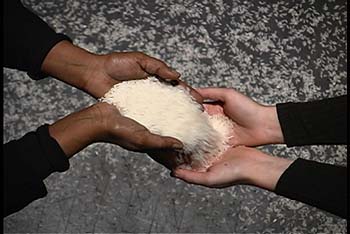 Sharing the nutritional bounty
Sharing the nutritional bounty
Jul 22, 2016
WASHINGTON, DC -- Throughout the last year, the global food supply chain has faced unprecedented pressure from challenging weather conditions due to El Niño, the continued outpouring of refugees from Syria and the Middle East, and a steep decline in oil and commodity prices. The demand for not just food, but proper nutrition, continues to grow exponentially. The U.S. is responding to that demand with its agricultural bounty combined with new investment in nutritional science to combat global micronutrient deficiencies, a condition called hidden hunger.
The U.S. rice industry in particular has always played a lead role in feeding the world, providing hundreds of thousands of metric tons of rice to vulnerable populations. Through a long term partnership with both the U.S. Department of Agriculture (USDA) and the U.S. Agency for International Development (USAID), U.S. rice has fed millions around the world through school feeding, agricultural value chain development, and emergency relief programs. The new addition of a fortified rice product to U.S. government feeding programs will feed more people around the world, but more importantly, will also help eradicate some of the most persistent micronutrient deficiencies that hold millions back from proper development and growth.
Fortified rice is either a coated or extruded kernel that contains eight critical micronutrients, including Vitamin B, Vitamin A, and Iron. The kernel is then blended back in with regular long grain rice in a way that provides optimal levels of nutrition. Preliminary reports from U.S. Government field tests acknowledge the effectiveness of fortified rice: it is accepted by those consuming it because it tastes and looks like regular rice, and it is absorbed in sufficient quantities to improve health and conquer hidden hunger.
“Work still remains to be done on the procurement and logistical side for this new product to gain traction in the food assistance supply chain,” says Jamie Warshaw, USA Rice Food Aid Subcommittee chairman. “We believe that fortified rice will increase the demand for U.S.-grown rice and will be a game changer - for rice growers and processors, for global feeding programs, and most importantly for the beneficiaries of the improved nutritional qualities of rice. USA Rice is committed to this effort and is working closely with U.S. Government entities to ensure that fortified rice has the maximum impact on those in need.”